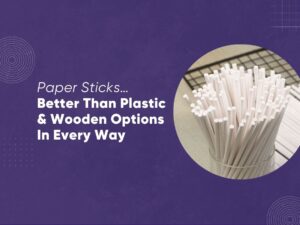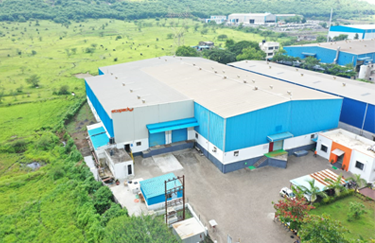Paper Sticks vs. Plastic and Wooden Sticks: Which One's the Best?

The world is waking up to the need for sustainable choices, and one area seeing significant innovation is the shift from plastic and wooden sticks to paper sticks. But how do these materials stack up against each other when it comes to sustainability, hygiene, and cost? Let’s dive into a detailed comparison.
Plastic Sticks: The Environmental Villain
Plastic sticks have been the default choice for decades due to their low cost, lightweight nature, and durability. However, the environmental cost of plastic sticks is staggering:
a. Non-Biodegradable: Plastic sticks take hundreds of years to decompose, contributing to long-term pollution in landfills and oceans.
b. Microplastic Pollution: As plastic degrades, it breaks into microplastics, which contaminate soil, water, and even the food chain.
c. Energy-Intensive Production: Manufacturing plastic requires significant energy and resources, leaving a high carbon footprint.
Wooden Sticks: Biodegradable but Not Without Flaws
Wooden sticks are often considered a better alternative to plastic due to their biodegradability. However, they are not without their drawbacks:
a. Deforestation Impact: Sourcing wood for sticks contributes to deforestation and habitat destruction if not done sustainably.
b. Hygiene Concerns: Wooden sticks are porous and can harbor bacteria, making them less ideal for food applications.
c. Splintering Risks: Wooden sticks can splinter, posing a safety hazard, especially in food products.
Paper Sticks: The Sustainable Champion
Paper sticks strike the perfect balance between sustainability and functionality, making them the ideal choice for various applications. Here’s why:
a. Eco-Friendly and Biodegradable: Paper sticks decompose much faster than plastic and don’t require deforestation when sourced from recycled or FSC-certified paper.
b. Hygienic and Safe: Non-porous and splinter-free, paper sticks are suitable for food and medical uses.
c. Customizable and Versatile: Available in various sizes and designs, paper sticks cater to a wide range of industries, from food to cosmetics.
Cost Analysis: Short-Term vs. Long-Term Benefits
a. Plastic Sticks: While cheaper upfront, plastic sticks incur significant environmental cleanup costs and are subject to increasing regulations and bans.
b. Wooden Sticks: Moderately priced but carry hidden costs related to deforestation and potential health risks.
c. Paper Sticks: Initially costlier but offer long-term savings by aligning with sustainability goals, reducing environmental impact, and avoiding regulatory penalties.
Ecopack India’s Role in the Sustainable Revolution
Ecopack’s paper sticks are designed to address the shortcomings of plastic and wooden sticks. Manufactured using eco-friendly processes, these sticks are durable, food-safe, and available in customizable options to meet diverse business needs.
The Clear Winner - Paper Sticks
In the sustainability game, paper sticks emerge as the clear winner. They combine the best of both worlds—the eco-friendliness of wood and the durability of plastic—without the downsides of either. By switching to paper sticks, businesses and consumers can take a meaningful step toward reducing their environmental footprint and promoting a healthier planet.
The choice is simple: for a sustainable future, it’s time to make the switch to paper sticks. Small changes can lead to big impacts, and with options like Ecopack’s paper sticks, embracing sustainability has never been easier.
QUICK LINKS
PRODUCTS
CUSTOMER CARE
For any information send an email to our Customer Service or contact us via social networks.
info_india@ecopack.com hr@ecopack.comDownload App
© 2023 ECOPACK INDIA PAPER CUP PVT. LTD.


